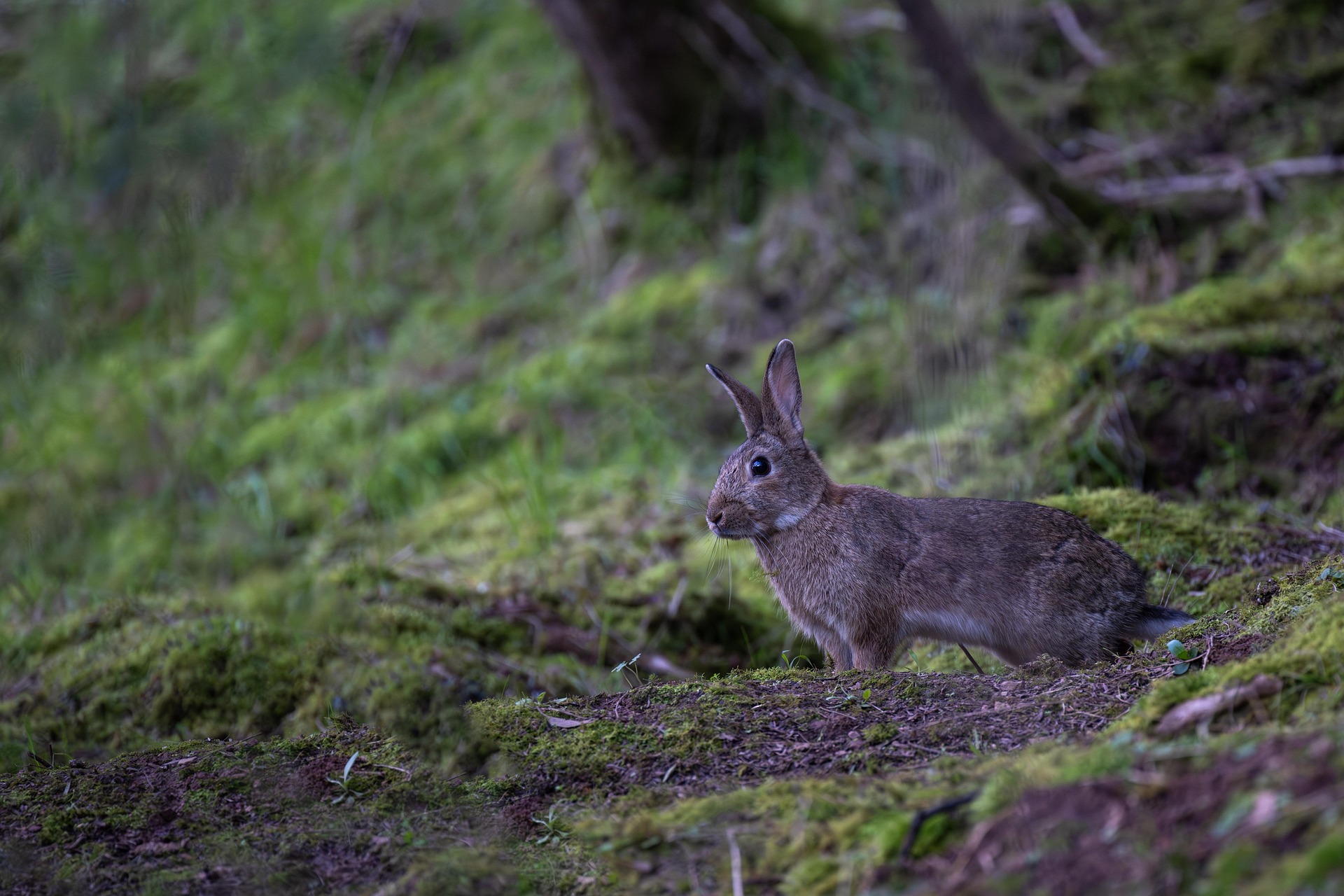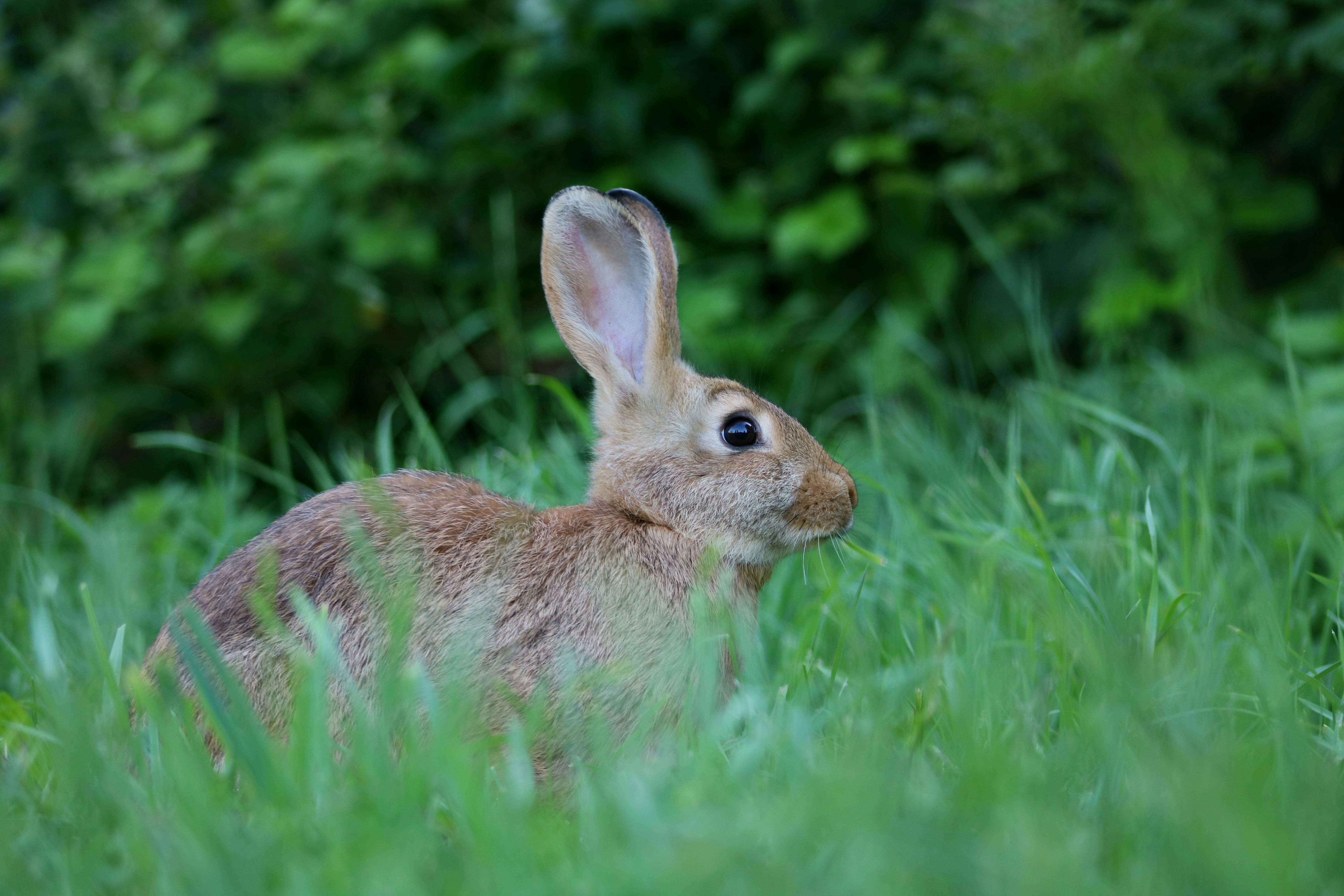The European rabbit (Oryctolagus cuniculus) is a mammal of the family Leporidae, the sole representative of its genus and considered the ancestor of all domestic rabbit breeds. Also known as the Old World rabbit or domestic rabbit, this species is an ecologically important herbivore and is considered both an agricultural pest and a keystone species in many ecosystems.
Morphological Features
Wild forms of the European rabbit average 1.5 to 2.5 kg in weight and a body length ranging from 38 to 50 cm. Domesticated variants can exceed these sizes depending on their breeding purposes. The species general coat color is generally shades of gray, black and brown, although reddish pigmentation can sometimes be observed. The undersides of the body are paler gray, while the underside of the tail is characteristically white.
Morphologically, the European rabbit has shorter ears and less robust legs compared to other rabbit (Leporidae) species. Physiologically, it is endothermic and homoiothermic (maintains a constant body temperature) and has bilateral symmetry. Domestication has created diversity in the European rabbit in terms of size, coat type, color patterns and general morphology.

European Rabbit (pixabay)
Geographic Distribution and Habitat
The last Ice Age restricted the species to the Iberian Peninsula, France and small areas of northwest Africa. However, thanks to human activities and the species adaptability, European rabbits now occur in the wild on every continent except Asia and Antarctica.
Biogeographically, the European rabbit is native to the Palearctic region and has been introduced by humans to the Nearctic, Oriental, Ethiopian, Neotropical, Australian and oceanic islands. It is considered cosmopolitan. Its preferred habitats include dry areas near sea level with soft, sandy soil (for easy nesting). Shrubland is preferred for the cover it provides, but forests are also common habitats. In Central Europe, in particular the European rabbit has learned to coexist with humans in cities, nesting in gardens and lawns, as well as in parks and cemeteries.
Their habitats include temperate and terrestrial biomes, including savannas or grasslands, forests and agricultural areas. They are also found in urban and suburban areas.
Behavior and Communication
European rabbits are social, territorial animals. When suitable soil conditions and forage availability permit, they prefer to live in groups in large, complex burrow systems (warrens). A typical colony consists of six to ten adults of both genus. Colonies have distinct dominance hierarchies, particularly important for males. Territoriality is most pronounced among dominant males during the breeding season.
European rabbits are primarily nocturnal, spending their days underground and foraging from dusk until dawn. Although generally silent, they can emit loud cries when frightened or injured. They communicate with each other through scent cues and touch, and they stamp their hind legs to warn of danger. Communication channels include visual, tactile, acoustic and chemical. Other modes of communication include vibration.
Feeding Habits
The European rabbit is a generalist herbivore. It feeds on a varied diet of grasses, leaves, buds, bark and roots. Gardeners know it for its diet of lettuce, cabbage, root vegetables and grains. Although its diet is relatively low in nutritional value and high in indigestible material, the European rabbit is one of the few rabbit species that regurgitates feces (coprophagy) to obtain additional nutrients from its food.

European Rabbit (Pexels)
Reproduction
Mating in rabbits is generally polygamous but males try to monopolize certain females. European rabbits can breed year-round but most breeding activity occurs in the first half of the year. Gestation lasts 30 to 37 days, with an average of 30 days and the average litter consists of 5 to 6 offspring. Females experience postpartum estrus after giving birth. One reason for rabbits reproductive success is induced ovulation, where eggs are released only in response to mating.
Cubs are weaned at four weeks of age (average 28 days), reach sexual maturity at about eight months and can live up to nine years. However mortality during the first year of life often exceeds 90%. Females provide maternal care for their altricial offspring; males are not involved in cub care.
Economic Importance for People
Old World rabbits represent one of the most economically important mammal species. The wild European rabbit is a popular game animal in Europe. Varieties of this species are raised commercially for meat, hides and wool. They are also used in medical research and for testing the safety of chemicals and consumer products.
However, the European rabbit has been successful in most places where it has been introduced and is considered an agricultural pest in many regions. It has also caused ecological damage in some areas where it has been introduced. Countries like Australia and New Zealand spend millions of dollars annually to control or eradicate it.
Conservation Status
Few mammal species are less endangered than the European rabbit. Besides being valuable to humans as pets and game, wild populations have successfully established themselves in many parts of the world. However, one species of European rabbit, found on islands in the Atlantic and Mediterranean is at risk. Its conservation status is listed as Near Threatened on the IUCN Red List. It has no special status on the US Federal List or CITES.


